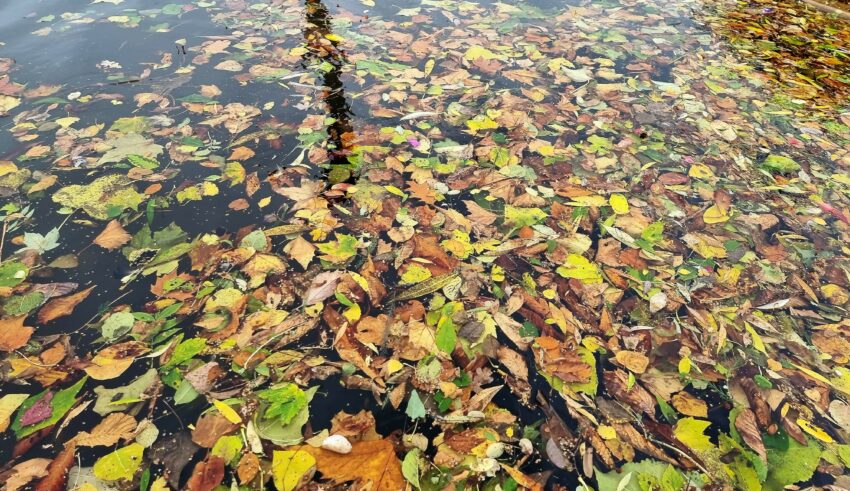
How to deal with your barriers to swimming outdoors
I’m lucky. I have an outdoor swimming spot close to where I live, and friends who are usually ready and willing to swim with me. I’ve got all the kit I need, and I was taught to swim before I could ride a bicycle. I don’t have any physical disability that makes getting to, into or out of the water difficult. I know not everyone is as fortunate and recognise how privileged I am. Nevertheless, even with so many factors making outdoor swimming easy for me, there are still barriers to open water swimming.
Barrier 1 – Getting out of bed
I usually swim in the morning, especially in the winter when it is dark so early in the evening. But it’s also dark when I wake up. My bed is warm and comfortable. It would be so much more appealing to hit snooze, roll over and fall asleep again rather than get up for a cold plunge.
Barrier 2 – Getting undressed by the river
Assuming I’ve managed to drag myself out of bed and down to the river, the next challenge is removing my clothing. It’s a public place, in full view of my neighbours and local dog walkers. I could just stand by the river and watch it. Nobody would know I’d been planning a swim. Once the clothes come off, there’s a commitment that I feel obliged to follow through with. Plus there’s always the possibility of accidental indecent exposure.
Barrier 3 – The river doesn’t always look inviting
The Thames is a murky river. You can rarely see more than half a metre through the water. There is often rubbish and organic debris, which for some reason seem to accumulate at our entry spot. Sometimes there is an unsightly scum or patches of brown foam. Unfortunately, due to pollution, there are times when we really shouldn’t swim but often it’s just silt and leaves. Because we don’t have the data, we can’t tell the difference.

It’s going to feel cold when you get in, and sometimes it’s so cold that it will cause you physical pain
Share
Barrier 4 – It’s cold
In the last year, water temperatures in my spot on the Thames have ranged from 2 to 24 degrees. The average is probably somewhere between 10 and 12 degrees. Mostly, it’s going to feel cold when you get in, and sometimes it’s so cold that it will cause you physical pain. The anticipation of that avoidable discomfort is another barrier to overcome.
Barrier 5 – Safety perceptions
Two themes I remember from childhood are: don’t talk to strangers and don’t swim in open water. The irony that meeting strangers and going open water swimming with them has become an important part of my life isn’t lost on me. However, despite all the safe swims I’ve done and the safety precautions I take, open water still has the ability to cause moments of panic or sometimes a sense of unspecified unease.
Barrier 6 – Time pressures
Open water swimming is, essentially, “play time”. With a business to run, family commitments, and other interests (yes, things that don’t involve swimming), I have to make decisions about how to spend my time. We understand that playing is good for children and encourage them to get on with it. As adults, in our culture that prizes productivity and efficiency, play time can feel frivolous and guilt-inducing.
Some of you will share my barriers to outdoor swimming. Many of you will have different ones. There is no trick I know of to make these barriers disappear. My proposal, instead, is to embrace them as overcoming those barriers is part of what makes outdoor swimming so special and life-enhancing. Getting out of bed, stripping next to the river and stepping into cold water gives you a sense of accomplishment to start your day with. Facing your fears and worries, and going swimming despite them, gives you a sense of inner strength.
It also helps to look past the barriers. I know, for example, that the cold feels unpleasant for the first minute or two. After that, the water feels amazing on your skin. I know, that once I’ve got my breathing under control and can properly swim, I will enjoy the sensation or movement through the water. I know the experience of being immersed in nature will stay with me through the day. I know of people who experience pain while walking and struggle to get into the water, but feel relief and freedom once they get there.
As for fun and frivolity, well, those are important too. Given the mental health and wellbeing benefits of outdoor swimming, spending a few minutes several times a week to get in the water should pay back in the long run and make up for any immediate loss of time that could be spent working.
Some barriers are insurmountable but many can be overcome. It’s better to acknowledge them, and the effort needed to deal with them, than to wish them away or pretend they don’t exist. What are your barriers to outdoor swimming, and how do you manage them?








